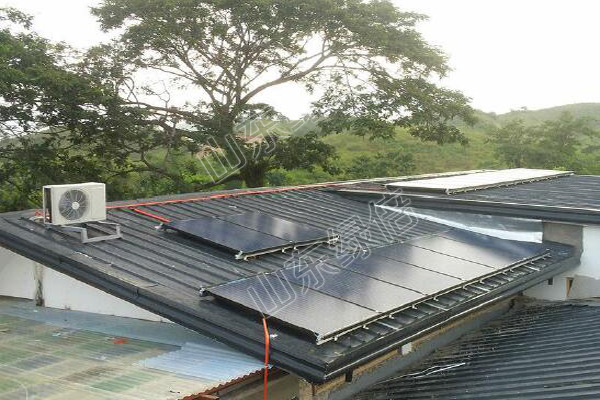Power generation principle of solar panel
Label:
solar panel
Power generation principle of solar panel.
solar panel cell is a device that responds to light and can convert light energy into electricity. There are many kinds of materials that can produce photovoltaic effect, such as monocrystalline silicon, polycrystalline silicon, amorphous silicon, gallium arsenide, selenium indium copper, etc. Their power generation principles are basically the same. Now take crystalline silicon as an example to describe the process of optical power generation. P-type crystalline silicon can be doped with phosphorus to obtain n-type silicon and form p-n junction.
When the light shines on the surface of the solar panel, some photons are absorbed by the silicon material; The energy of photons is transferred to silicon atoms, making electrons transition and become free electrons. They gather on both sides of the p-n junction to form a potential difference. When the external circuit is connected, under the action of this voltage, a current will flow through the external circuit to produce a certain output power. The essence of this process is: the process of converting photon energy into electrical energy.
1、 Solar power generation there are two ways of solar power generation, one is light heat electricity conversion, the other is light electricity direct conversion.
(1) The light heat electricity conversion mode generates electricity by using the heat energy generated by solar radiation. Generally, the solar collector converts the absorbed heat energy into the steam of working medium, and then drives the steam turbine to generate electricity. The first process is light heat conversion; The latter process is a thermal electric conversion process, which is the same as ordinary thermal power generation. Solar thermal power plant has high efficiency. However, due to its industrialization in the initial stage, the current investment is high. A 1000MW solar thermal power station requires an investment of 2 ~ 2.5 billion US dollars, and the average investment of 1kW is 2000 ~ 2500 US dollars. Therefore, it is suitable for small-scale special occasions, and large-scale utilization is not cost-effective in economy, and can not compete with ordinary thermal power plants or nuclear power plants.
(2) Light electricity direct conversion mode this mode uses photoelectric effect to directly convert solar panel radiation energy into electric energy. The basic device of light electricity conversion is solar cell. Solar cell is a device that directly converts solar energy into electrical energy due to the photovoltaic effect. It is a semiconductor photodiode. When the sun shines on the photodiode, the photodiode will turn the sun's light energy into electrical energy and generate current. When many cells are connected in series or in parallel, they can become a solar cell array with relatively large output power. Solar cell is a promising new power supply, which has three advantages: permanence, cleanliness and flexibility; Compared with thermal power generation and nuclear power generation, solar cells will not cause environmental pollution; Solar cells can be large, small and medium-sized, ranging from medium-sized power stations of one million kilowatts to solar cell packs for only one household, which is unmatched by other power sources.
